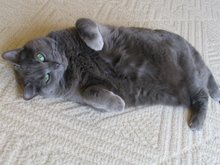I apologize for the break in posting, I know you're all waiting with bated breath to hear about how wool is processed on a large scale. Things around here are picking up a bit, so I'll try to be better, but I can't promise anything.

Onto the wool.
When my friends Jill, Jaja, and I visited the wool mill, I didn't actually think I would be interested in the wool processing equipment. But I ended up spending a large amount of time taking pictures of it and learning how the wool goes from sheep to yarn. (I took the pictures of two different machines, each with different colors of yarn, so don't get confused. One is white and one is brown).

After the wool has been washed and picked (or "teased") to get most of the vegetable matter out, they fluff it a little bit by hand and dump it all into the "hopper."

The hopper catches small bits of wool and pulls it up into the rest of the machine, which consists of several large cylindrical drums with pins attached to them.


The drums pull the yarn and straighten the fibers out until they are all aligned, and the wool is a continuous sheet of parallel fibers, each fiber pulling on the ones behind it.

It works kind of the way water flows up a plant (oh my, sorry, plant nerd alert), with each molecule pulling on the one behind it to make a continuous column. In this case, it's a very thin sheet of wool, which has been made entirely uniform by all of the pins pulling the fibers apart.

From here, the thin layers of wool can be stacked and cut up to make batting. Before it's cut, the batting looks like this:

If the wool is meant for yarn, the thin sheet is gathered into a fluffy rope, which is called roving.

Lots of people buy roving and spin the yarn themselves (which I'm learning to do at the Craft Center, a post to come!). The roving is fed into large cylindrical containers, and it looks really really cool.

From these containers, it is fed into the spinning machine, which can be set to spin different types of yarn.


They spin the yarn onto bobbins, and there is another machine that takes the yarn off the bobbins and spreads it out so it can be made into skeins, which is the final form in which the yarn is sold to the public.

Here's a video of that last machine:
Of course, there was one machine from the 1920s which would do the entire process, from fleece to yarn, but it wasn't working. The first picture in this post shows one part of that massive machine. It was so huge that they had to assemble it and build the barn around it.
Oh, and HAPPY HALLOWEEN!





1 comment:
Wow, cool post. Machinery is amazing. I always wonder who thought up all of these different parts to do so many different little jobs.
Post a Comment